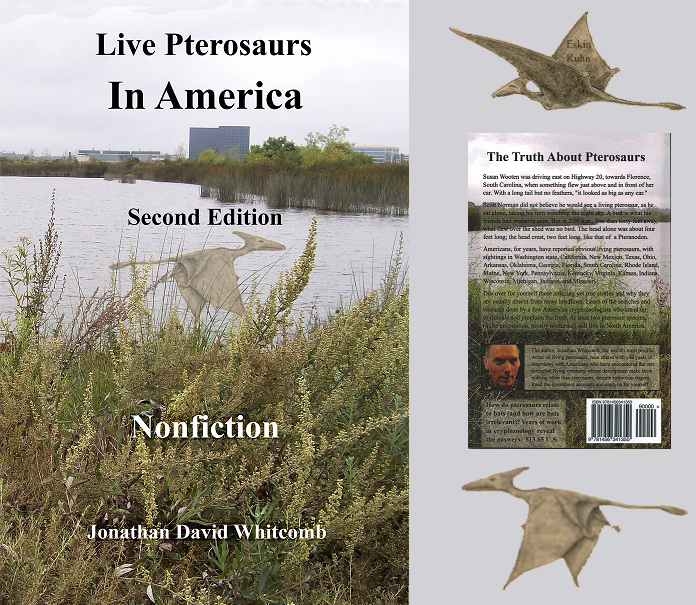I recently interviewed a man who observed several strange lights near Marfa, Texas. Driving across the country, two days earlier, Mr. Greene decided to stop at the Marfa observation station, having previously read of the strange lights. He watched the sky for hours, grateful that the flying lights were active that night. [details became available in late 2010, in the nonfiction book on cryptozoology: Live Pterosaurs in America.]
Why consider that American “ghost lights” relate to live pterosaurs? Consider the ropen light of Papua New Guinea. From them we can learn that at least some living pterosaurs are bioluminescent, in particular the apparent Rhamphorhynchoids of the Southwest Pacific. Now consider how many strange lights are reported across the United States: North Carolina (Brown Mountain Light), South Carolina (Bingham Lights), Arkansas (Dover Lights), Washington state (Yakima Lights)–those are only a sample. Strange lights have appeared across the United States for decades or centuries; apparent pterosaurs have also appeared across the United States for decades or centuries.
A bioluminescent flying creature much larger than a firefly I label “B.F.C.” Of course, not all strange flying lights are BFC, but I will also use this term to refer to ones with reasonable potential, from the perspective of my associates and I (who are convinced that the ropen is a bioluminescent Rhamphorhynchoid).
I took special interest in one of the lights that Mr. Greene described to me. It flew around for over two hours, until the sun was about to come up. At least once, it dived down, at a speed apparently consistant with what I would expect of a B.F.C. that is hunting bats, diving after one bat.
[The special characteristics of Marfa Lights should not be confused with ghost lights that may be barn owls.]
***************************************************************



